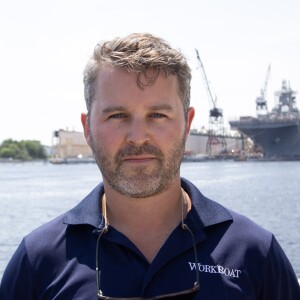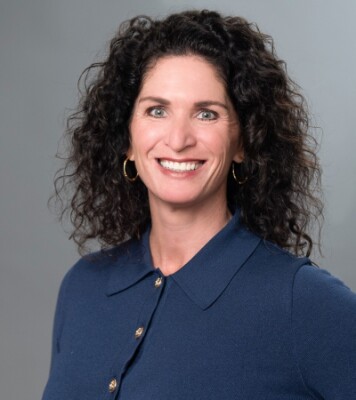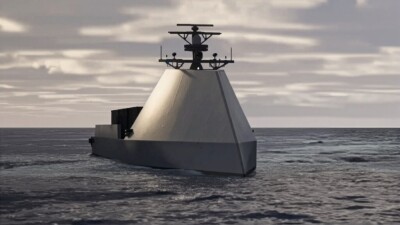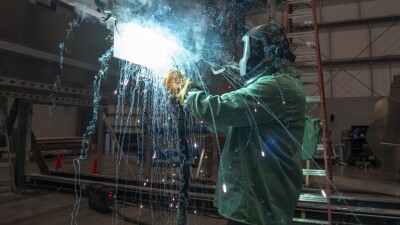Maritime Interviews: Kelly Pearlson Fraind, CEO Pearlson Shiplift
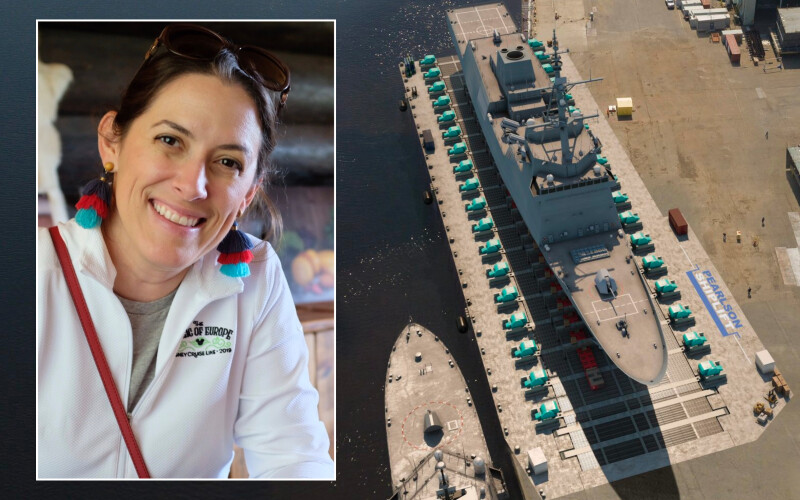
Ben Hayden recently sat down with Kelly Pearson Fraind, CEO of Pearlson Shiplift, to discuss the company’s latest project with BAE Systems.
Tell us more about the planning and type of shiplift system that will be used in the BAE project?
The new BAE Systems project is a $200 million complex in Jacksonville, Florida, that will feature a new, state-of-the-art shiplift system built by Pearlson Shiplift. Upon completion, it will easily accommodate a Flight III Navy guided-missile destroyer or a commercial vessel displacing approximately 25,000 tons.
The project is unique because we were involved from day zero. The design started on the equivalent of a scribble on the back of a napkin. During those initial meetings, the BAE Systems team recognized a need to upgrade their shipyard’s facility to meet the demands of the current and future Navy —which is a big part of their market — but also to meet the demands of the other vessels in the area that were asking for service. Their existing drydock solution had capacity constraints and as such they asked us to design a shiplift that would allow them to handle future Navy requirements, plus any yacht or tug project they had on the horizon.
Looking at the makeup of all the vessels that BAE Systems wanted to service, the Pearlson Shiplift team designed a single-level transfer system that will allow three full-size Navy vessels to be serviced. It gives BAE ultimate flexibility in which vessel they can pull out of the water and service, so that they don't have to turn away any clients.
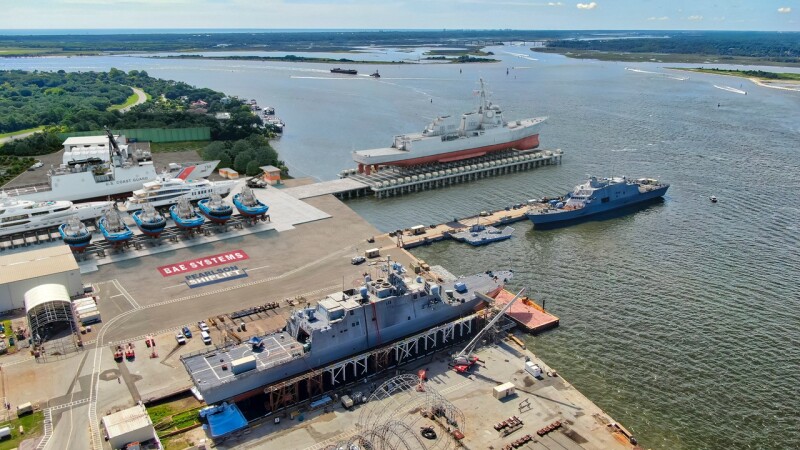
Could you provide a timeline of the BAE project (design, construction, different phases, delivery date)?
Our team started with this project over five years ago, beginning with an initial design to determine viability. Over the next few years, a team of Pearlson engineers provided the design and support the BAE team required to justify this project to their stakeholders. We just broke ground in April and the project is expected to be completed by the first quarter of 2025.
What are some other projects that Pearlson is currently working on in the U.S.?
It’s a busy time for us. We’re working on the second largest shiplift in the U.S., which is being built in Wisconsin at Fincantieri. This project also serves the Navy, but this one is for newbuild launches rather than repair and refit. Fincantieri is in the final stages of construction, and it should be operational by the end of this year.
What differentiates the shiplifts that are built for a newbuild shipyard versus a repair and refit shipyard?
A shiplift designed for a newbuild shipyard is easier to plan as you have one or a mix of vessels that have already been defined. In other words, the client knows exactly what vessels they will be building. With newbuild projects, the clients have the docking plans, and they know when they need to be delivered. If the Navy puts an order in, the shipyard must fulfill it and the client understands the exact vessel they will be launching. Whereas for a refit shipyard, there is a whole multitude of questions: What market are you looking at? Are you going after yachts? Are you going after tugs? Are you going after Navy vessels? The answers to these questions mean that the shiplifts we design for refit shipyards need to be more of a 'Swiss army knife.' Refit yard shiplifts have to lift the market of potential vessels that will be arriving at their shipyard, as opposed to a defined vessel. This makes it more complicated to make sure you cover all your bases in designing a shiplift for a repair yard.
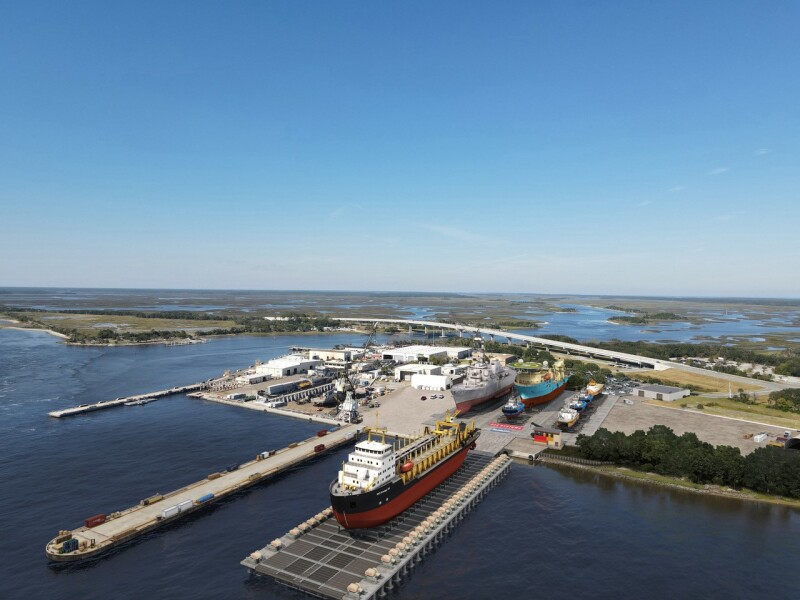
Pearlson has been around for over 60 years and completed over 200 installations in 60 countries. Could you walk us through the different transfer systems? Do you have a favorite install that may have been unique to its location?
The concepts for each shiplift are the same. You drop a platform in the water, the boat goes on top of it, transfers it to shore, and the work is carried out on shore. As for the transfer system chosen, there are a million variables, but the biggest one is land available. For a project that has a greenfield site and tons of real estate, we will recommend a two-level transfer system as it is dependable and fast. The easiest way to think of this is as a shuttle system. The boat goes on to a cradle that rolls on top of the platform, it moves ashore, and then it can move transversely using a shuttle, and then you pull the cradle with the boat on top into its transfer berth to do work.
We built a two-level system in Kesennuma, Japan, about five years ago. That is a special site to me as the whole area was decimated by a tsunami and the Fukushima nuclear reactor disaster. The government wanted to put infrastructure back in to help the maritime industry get back to business. Two-level systems are also quicker because you don't have to switch the direction of the wheels as they are already in the right direction. It is essentially a simple process: put something on top, shuttle it, park it and do work. It's a neat design.
In this day and age, very few places have enough real estate for a two-level system, therefore most new shiplifts are single level. There are two choices with single-level systems: rails and wheels or a self-propelled modular transporter (SPMT), which is what the BAE Systems project is in Jacksonville. We always look to see what infrastructure a site already has in operation, as many shipyards may use SPMTs at their site already and we can utilize that same equipment, but maybe add a few more modules.
You’ve been with the company for over a decade, following in your father's and grandfather's footsteps. As the new CEO of Pearlson, what are your plans for the immediate future and how do you envision the company 30-40 years down the road?
My grandfather, Raymond, invented the modern shiplift system in the 1950s, which he then patented and named Syncrolift. After my grandfather passed the helm to my father, he grew the company’s client base, including two shiplifts capable of lifting nuclear submarines. So yes, I have big shoes to fill.
My background is slightly different from that of my father and grandfather who were both marine engineers. I am an industrial engineer. Before I came to Pearlson Shiplift, I worked as an industrial engineer for Walt Disney World in Orlando on the planning and implementation of theme park attractions, specifically focusing on how to use data to make sure we were always delivering the best product for our customers. What I bring to the leadership of our company is a different perspective and an inherent desire to always ask questions.
There is no need to change most of what we do, as it has worked well for over 60 years. There is definitely an opportunity to grow the services we offer and add value for our clients, while still delivering the personal touch that the Pearlson family name is known for. I have two young daughters and one of them has already said she wants to be the fourth generation at Pearlson. Nothing would make me prouder. We want to keep doing what we do well, which is designing shiplifts to help our clients get their vessels in and out of the water and service them in the most efficient way possible.



